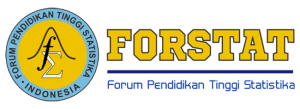Pemodelan Faktor-Faktor Yang Berpengaruh Terhadap TPT Provinsi Tertinggi Di Indonesia Sebagai Dampak Dari Covid-19
DOI:
https://doi.org/10.34123/jurnalasks.v14i2.316Keywords:
Fixed Effect Model, Panel Regression, The Open Unemployment RateAbstract
Coronavirus Disease (COVID-19) is the biggest problem faced by Indonesia as well as all countries in the world. All sectors of the economy have experienced tremendous pressures that have led to an increase of the Open Unemployment Rate. The Open Unemployment Rate is the percentage of the number of unemployed to the number of labor force in a certain area. This research was conducted with the aim of knowing the factors that influence the Open Unemployment Rate. So that it is expected to provide recommendations in determining policies to overcome the problem of unemployment in Indonesia. Especially the Provinces that have the Open Unemployment Rate values above Indonesia's target value in 2020, which is 4,8 percent. The analytical method using panel regression. Panel regression was used because this study would detect and measure the impacts that simply cannot be seen in cross-section data or pure time series. The results of the panel regression analysis show that the variables of Labor Force Participation Rate, Mean Years School, Economic Growth and Population Density have a significant effect on Open Unemployment Rate in 12 Provinces of Indonesia. The panel regression model that was formed was able to explain the response variable with the goodness criteria of 90,59 percent.















